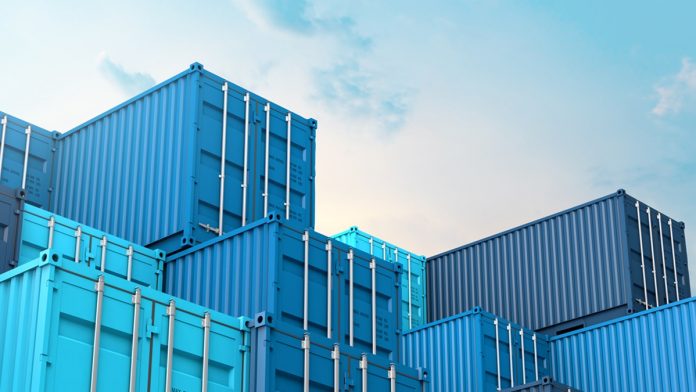
Mr. Marcus Burtenshaw, Executive Director and Head of Occupier Services and Commercial Agency (OSCA), Knight Frank Thailand, said “the market for modern trade distribution centers saw a decline in demand over the first half of the year. However, take up remained positive, having been fueled by a growth of sectors such as e-commerce, last mile logistics and consumer products even whilst the global economy faltered in the wake of the pandemic.”
In H1 2020, the Thai economy contracted by 6.9% Y-o-Y, decelerating from the 1.8% expansion recorded in H2 2019 as the COVID-19 pandemic weakened domestic and global economic conditions significantly.
On the expenditure side, private consumption and government consumption expenditure declined by 2.1% and 0.7% respectively. Total investment fell by 7.2% as private investment declined by 10.2%. However, public investment increased by 1.2% as remedial measures to stabilize and restore the ailing Thai economy were rolled out. Exports of goods and services contracted by 17.6% in real terms, largely attributable to manufacturing products which were affected by temporary shutdowns and reduced global demand. Meanwhile, imports contracted by 13.2% in real terms as consumer goods declined in both durable and non-durable goods by virtue of lower purchasing power in private consumption.
On the production side, the transport and storage sector declined by 21.7%. Transport services and shipping support services dropped by 23.0% and 14.0% respectively. This is due to stagnant demand for transport services, particularly air transport, during the last 3-4 months of H1 2020. The number of transport operator licenses for trucks in circulation fell by 0.3% H-o-H to 385,775 licenses. This is the first time the total has declined after increasing for 5 consecutive halves.
Supply
Based on Knight Frank Thailand Research, total warehouse supply grew by 78,277 sq m or 1.8% H-o-H to reach 4.54 million sq m. On a yearly basis, supply increased by 3.7%, which is slightly above the annual growth rate of 2.6% over the past 3 years. The continued limited growth in supply is expected given the poor global and domestic economic conditions in combination with existing vacancies in the market. Many developers may have prioritized maintaining and improving current stock performance over launching new projects unless they received clear and substantial interest from tenants beforehand.
Figure 1
Thailand Warehouse Supply
Sq m

Source : Knight Frank Thailand
Supply Distribution
Warehouses in Thailand are heavily concentrated in regions which provide unique advantages from a logistics standpoint. The region with the largest market share is the Bangkok metropolitan region, with the focal points being Bangkok and Samut Prakan. Bangkok is the economic pinnacle of Thailand, contributing to around 30% of the country’s GDP. Meanwhile, Samut Prakan acts as important link between Bangkok, Suvarnabhumi Airport and the Eastern Economic Corridor (EEC) region. Around 2.07 million sq m of total warehouse supply is in the Bangkok metropolitan region, representing a 45.6% market share. The region experienced the highest growth rate in supply, with supply having increased by 2.0% H-o-H and 6.0% Y-o-Y. A stimulated e-commerce market and the corresponding progression in last-mile logistics continued to drive growth in the Bangkok metropolitan region’s logistics property market. The eastern seaboard contains the 2nd largest market share at 38.0%. The region benefits from its importance as a manufacturing and distribution hub, as well as its special designation as the EEC linked with many investment privileges. Total supply in the Eastern seaboard increased by 2.1% H-o-H and 3.1% Y-o-Y. Meanwhile, supply in the central region continued to lag behind supply in other key areas, having increased by just 0.1% H-o-H and declined by 0.8% Y-o-Y.
Figure 2
Thailand Warehouse Distribution by Region

Source : Knight Frank Thailand
Table 1
Thailand Warehouse Distribution by Region
‘000 sq m

Source : Knight Frank Thailand
Demand
While leasing activity fell throughout 2019, it dropped significantly in H1 2020. Take up declined by 55.1% from the end of 2019 to 89,493 sq m, which is the lowest level of take up recorded over the past 5 years. In contrast, the average level of take up during the same period was 214,169 sq m. Subsequently, net absorption also fell to a 5 year low of 24,891 sq m, having decreased by 81.9% H-o-H. The drop in demand is most likely due to disruptions caused by the COVID-19. The pandemic has worsened the already slowing Thai economy and also increased uncertainty for both foreign and domestic investors alike. In addition, demand continued to shift towards built-to-suit warehouses as tenant requirements become more specific and operational efficiency is valued over pure rental cost savings. Built-to-suit warehouses enable developers to mitigate occupancy risk because the lease agreement is signed prior to the construction of the project, and tenants are likely to renew the lease term as there are limited alternatives elsewhere. In addition, built-to-suit warehouse leases are long-term leases that enable the developer secure a steady flow of rental income and accurately make financial forecasts. Frasers Property and WHA, the two largest developers by market share, have both underlined a stronger focus on increasing their Built-to-Suit development projects.
Market demand rose albeit at a much slower pace than in previous years. Total occupied space increased by 0.7% H-o-H or 4.5% Y-o-Y to 3.78 million sq m due to the positive level of net absorption. An upsurge in demand for some FMCG goods, medical supplies and fresh food, especially through e-commerce channels, may have been responsible for some of the positive leasing activity in the market this half.
Figure 3
Thailand Warehouse Supply – Demand Dynamics
Sq m

Source : Knight Frank Thailand
Figure 4
Thailand Warehouse Supply, Demand & Occupancy Rate
Sq m

Source : Knight Frank Thailand
As net absorption was lower than supply growth, the market occupancy rate fell by 0.9% points from the previous half to 83.3%. For the first time in 3 years, the market occupancy rate declined. The rate fell across the board for all key areas. The occupancy rate in the central region declined the most, falling by 1.6% points H-o-H and 1.4% points Y-o-Y to 80.9%. Meanwhile, it declined by 0.5% points H-o-H to 89.9% for the Bangkok metro and 1.1% points to 76.5% for the Eastern seaboard. However, unlike in the central region, the occupancy rate in both regions is still up on an annual basis.
Table 2
Thailand Warehouse Occupancy Rate by Region

Source : Knight Frank Thailand
Rental Rates
The average asking rent for warehouses in Thailand remained flat at 157 baht per sq m per month. Since 2013, the average rate has undergone negligible change, hovering within a narrow range of 155 baht to 157 baht. Given the existing vacancy level and minimal difference in the standard ready-built warehouse characteristics, major increases in market rent may be difficult to justify. On the other hand, rather than decrease the asking rent to counter the drop in demand caused by COVID-19, a number of developers have elected to grant rental deferments or rebates for existing tenants. On a regional basis, the asking rent increased minimally in the Bangkok metropolitan and central regions, increasing by 0.1% H-o-H and 0.2% H-o-H respectively. However, it declined by 0.8% H-o-H for the Eastern seaboard. Despite rent having increased at an average of 0.5% over the past 5 years, rental growth in the region seems to have tapered off, having fallen by 1.4% Y-o-Y in the first half of this year.
Figure 5
Thailand Warehouse Average Asking Rent by Region
Baht per sq m per month

Source : Knight Frank Thailand
Although there was a noticeable difference in average asking rents, the rental spread was quite similar across the various regions. The most expensive warehouses commanded up to twice as much as their cheapest counterparts, leading to a wide rental spread of 80 baht to 100 baht. It indicates that in all 3 regions, there are warehouses of various qualities ranging from older, competitively priced properties to newer, ‘premium’ warehouses catering to different segments of tenants.
Figure 6
Thailand Warehouse Asking Rent Spreads
Baht per sq m per month

Source : Knight Frank Thailand
Review & Outlook
The logistics property market in Thailand did experience a lower level of new leasing activity as a result of the disruptions caused by COVID-19 on the Thai economy and the global supply chain. We predict that leasing activity should pick up but at a subdued level in the latter half of this year as production is resumed and firms start to execute revised real estate strategies based on the current and projected impact of the pandemic on their business operations.
The Office of Industrial Economics reported that there were signs of recovery in the industrial sector in June as both the Manufacturing Productivity Index and capacity utilization rate expanded from the previous month. Indirectly, this could signal positive growth in the logistics sector and by extension, warehouse properties as more goods will need to be transported and stored as production ramps up.
Globally, there have also been discussions of altering supply chains to be less dependent on China. If enough companies choose to relocate to Thailand, this could generate greater demand for the logistics property market. However, given the complex nature of supply chains already in place, the transition away from China is a costly proposition for firms looking to do so. It will be a gradual process that will require major public sector involvement to provide enabling regulatory frameworks to persuade companies to relocate to Thailand. As we had projected, the accelerated growth of the e-commerce sector following the social distancing measures and temporary shutdowns drove some of the positive leasing activity in H1.
We believe that the sector’s role as a driver of growth in the logistics property market will continue to grow and offset demand lost from pure offline retail sources. To reiterate our previous forecast, while the eastern seaboard and central regions may benefit from the developing e-commerce market, the area of focus will most likely be the Bangkok metropolitan region due to Bangkok’s status as the economic engine of Thailand and the growing importance of last-mile logistics.
There is still much uncertainty surrounding what recovery will look like and the fact that built to suit properties have been growing in market share. On the other hand, developers in this market build generally based on real demand and have already slowed down new ready-built warehouse project launches over the past few years. Therefore, the market has been fairly balanced and there is low likelihood of oversupply going forward unless the situation worsens and a significant number of firms are forced to shut down. As a result, both the average asking rent and occupancy rate of ready-built warehouses are expected to remain constant throughout the remainder of the year.



















